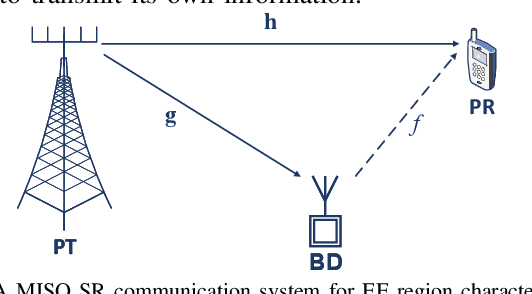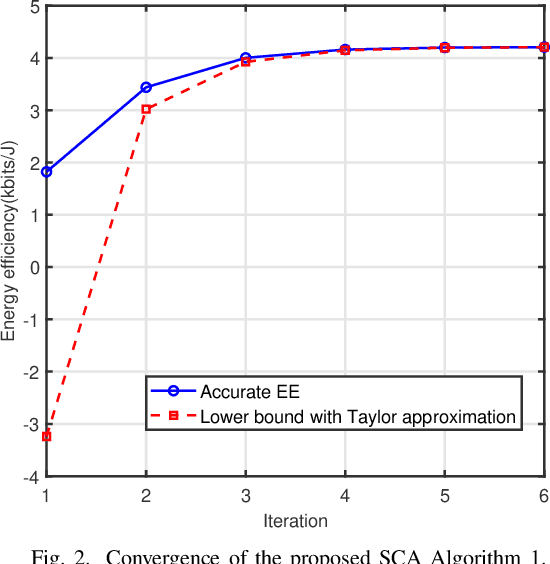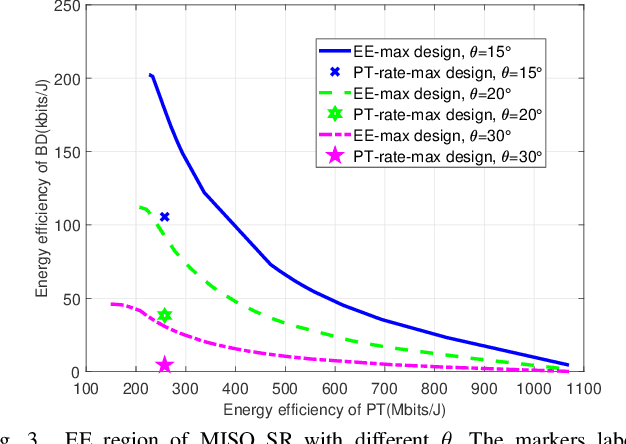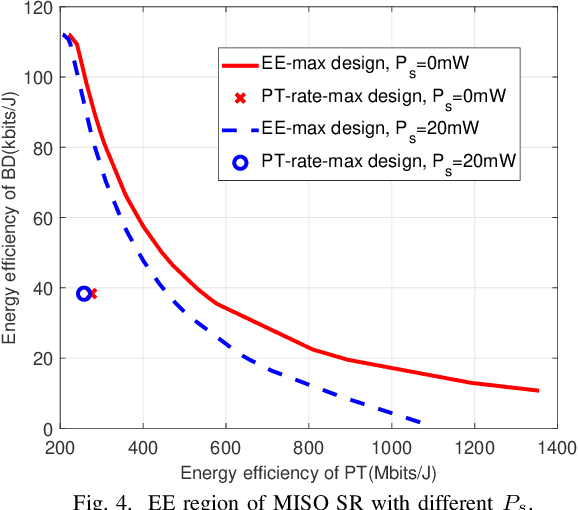Characterizing the Energy-Efficiency Region of Symbiotic Radio Communications
Paper and Code
May 08, 2022



Symbiotic radio (SR) communication is a promising technology to achieve spectrum- and energy-efficient wireless communication, by enabling passive backscatter devices (BDs) reuse not only the spectrum, but also the power of active primary transmitters (PTs). In this paper, we aim to characterize the energy-efficiency (EE) region of multiple-input single-output (MISO) SR systems, which is defined as all the achievable EE pairs by the active PT and passive BD. To this end, we first derive the maximum individual EE of the PT and BD, respectively, and show that there exists a non-trivial trade-off between these two EEs. To characterize such a trade-off, an optimization problem is formulated to find the Pareto boundary of the EE region by optimizing the transmit beamforming and power allocation. The formulated problem is non-convex and difficult to be directly solved. An efficient algorithm based on successive convex approximation (SCA) is proposed to find a Karush-Kuhn-Tucker (KKT) solution. Simulation results are provided to show that the proposed algorithm is able to effectively characterize the EE region of SR communication systems.
 Add to Chrome
Add to Chrome Add to Firefox
Add to Firefox Add to Edge
Add to Edge